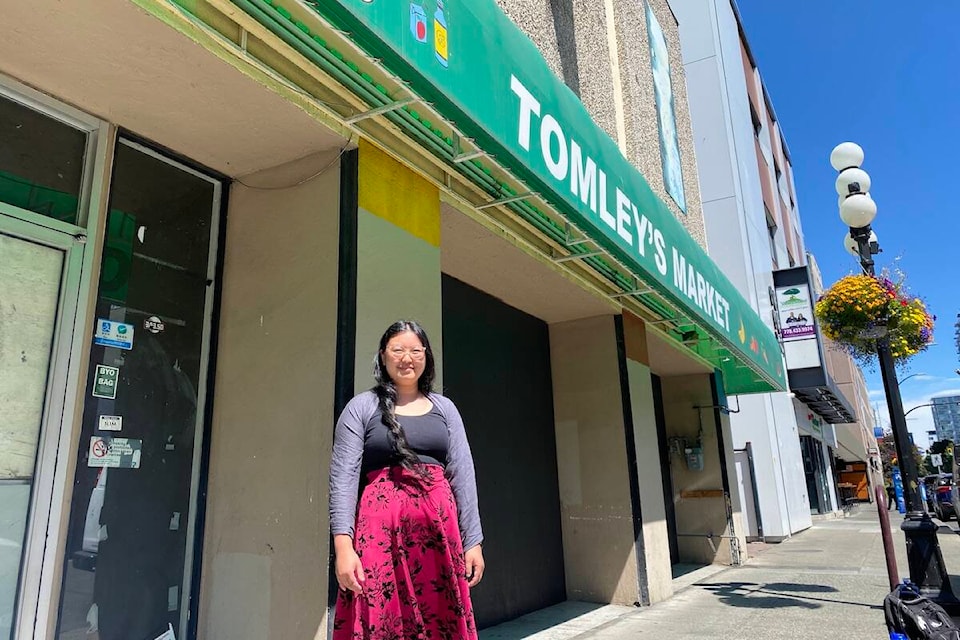Ian Case often refers to the Victoria arts scene as a ladder with multiple rungs missing.
He said the missing rungs are the lack of infrastructure for local artists to start with small-scale works and climb all the way to a large regional venue, one step at a time.
“The lack of a really cohesive ladder of venues has prevented the arts ecosystem from developing small companies that can grow into the larger regional facilities,” said Case, director of events at the University of Victoria’s Farquhar Auditorium and former general manager at Intrepid Theatre.
All performing arts companies operating out of downtown Victoria currently rent and lease the spaces they need to operate, including performance venues, office spaces, rehearsal spaces and storage spaces.
But with lease end-dates looming, threats of rent increases and renovictions, performing arts companies don’t currently have a single square foot in the downtown core to comfortably call their own.
The Other Guise Theatre Company, under the direction of artistic and executive director Matthew Payne, recently became the first performing arts company to own space in the downtown core.
Lynnea Chan, administrative assistant with The Other Guise, said she hopes the former Johnson Street grocery store, which will be transformed into an “artists’ hub” with a black box theatre, a cabaret theatre, an outdoor venue, office spaces and rehearsal spaces, can provide that missing rung and alleviate the uncertainties many companies face long-term.
“Other Guise wants to make this into a space for artists to gather, rehearse and perform,” she said. “There are really big spaces and there are really small spaces, and there’s nothing for companies that are emerging, and without those, the arts scene doesn’t grow or continue.”
But Payne’s vision won’t be a reality until renovations are complete in mid-2025, and won’t imminently alleviate the ongoing challenges and desperation performing arts companies face in acquiring and maintaining infrastructure in the downtown core.
“I think it’s a good signal that there are opportunities starting to come up, but there’s a number of theatre companies that are still struggling right now,” said Kurt Archer, founder of Between Words Theatre.
While producing the Victoria One Act Theatre Festival in June, Archer said he knew accessing performance and rehearsal space would be an issue. As a relative newcomer to the scene coming from Calgary, Archer was shocked at the lack of municipal support in place for artistic venues.
“When I approached the city, they didn’t have any mechanisms to be able to support empty space to be converted into temporary use space,” he said.
Real estate in downtown Victoria continues to be highly sought-after by developers hoping to turn it into livable or retail spaces, and smaller theatre companies have historically been left out of the conversation to take ownership of these spaces.
“We are an industry that is built on scarcity and achieves a great deal with very little, however, these non-profit activities are always at risk given their vulnerability to those market forces,” said Ian Rye, CEO of Pacific Opera Victoria.
With the emphasis on downtown density, small, high-ceiling warehouse spaces ideal for a performing arts venue are often demolished or developed. Performing arts companies are then forced to “make do” with less-than-adequate spaces.
“As we lose small warehouses and quirky under-kept buildings to development, we also lose affordable space for creative and cultural activity,” Rye added.
Pacific Opera Victoria operates in three different venues. The Baumann Centre and the Opera Shop, home to artistic administration and storage, are both operated under leases. The company also rents the Royal Theatre short-term as a performance venue.
Rye said the biggest challenges the company faces are competition and access to the Royal Theatre, whose availability is stretched thin due to high demand from touring performance groups, who are often given priority over local companies.
He added the commercial space home to the Opera House also lacks stability and “is always at risk of significant rent increases.”
The uncertainty of infrastructure along with the increasing cost of living takes a creative toll on Victoria’s artists.
“We continue to have a small but mighty artist contingent in this city,” Rye said. “We are not doing the hard work of attracting more artists to our community, (with) affordability and livability being such major factors.”
“It impedes the ability for us to make good work,” Payne added. “If you’re worried about where your home is going to be, how can you possibly stop and make art?”
While Payne’s new vision won’t be a magic solution for the infrastructure challenges the community is facing, he said he hopes he can begin to show what is possible for the Victoria arts scene in the downtown core.
Rye and Case said the ownership of the new development is a glimmer of hope that the city’s performing arts scene might move away from the uncertainty of leases and rentals, allowing it to thrive in the downtown core, rather than simply survive.
With initiatives such as the City of Victoria’s cultural infrastructure grant which helped fund Payne’s purchase, they are optimistic that the city is starting to pay attention.
Despite ongoing challenges, local arts advocates said the performing arts scene isn’t going away and will continue to push for an established presence in the downtown core, as well as increased government investments in cultural infrastructure.
“We have always played in a league way bigger than the size of this city, and we will continue to punch above our weight class,” Case said.
READ MORE: ‘Impassible’: Cyclists furious after Saanich blocks path from ‘speeding’ bikes
